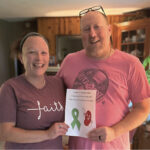
Advances in dentistry over the past 25 years have left us with much to smile about.
We’ve developed better ways to clean, whiten, straighten and even replace teeth. The profession itself has transformed from being a reactive practice to a preventive one.
“These advances have improved lives in countless ways,” said Dr. Jennifer Chambers, chief medical officer at Capital BlueCross, “but there is still much to do.”
According to the Centers for Disease Control and Prevention (CDC):
- About 1 in 5 children aged 5 to 11, and 1 in 7 adolescents aged 12 to 19, have at least one untreated cavity.
- Children aged 5 to 19 from low-income families are twice as likely to have cavities compared with peers from higher income homes.
- Children with untreated cavities and poor oral health miss more school, and receive lower grades, than kids with healthy mouths.
- Oral disease can be painful, making it difficult to eat, speak, learn and socialize.
- On average, 34 million school hours are lost each year because of unplanned dental care.
“The good news is that addressing these issues depends less on breakthroughs in technology and dental science and more on regular checkups and good brushing habits,” Dr. Chambers said. “Cavities are preventable, and good habits can begin early.”
The CDC’s P-E-A-R-L-S of Wisdom, for example, is a good dental health reminder for parents with babies:
- Protect tiny teeth by caring for your own teeth while you are pregnant. Your expectant child’s oral health starts with you.
- Ensure you wipe your baby’s gums after each meal.
- Avoid putting babies to bed with a bottle. Milk can pool around the baby’s teeth and cause tooth decay.
- Remember to brush your child’s teeth twice a day with fluoride toothpaste. Consult a doctor if the child is under 2.
- Limit sugary drinks and sweet snacks, and encourage natural fruits and vegetables.
- Schedule your child’s first dental visit by his or her first birthday, or after the first tooth appears.
For kids age 3 and over, the American Dental Association recommends twice-daily brushings using small, rice grain-sized amounts of fluoride toothpaste. Adults should supervise and assist with brushing until the child develops the motor skills to brush thoroughly on his or her own.
Dental sealants are arguably the most effective weapon in the war on cavities. Sealants can prevent 80% of cavities over two years and 50% of cavities over four years, the CDC says. Sealants are applied to the chewing surface of new molars when they appear in children, usually between the ages of about 6 and 14.
Most dental plans cover sealants to some degree. BlueCross Dental, for example, covers sealants for dependent children to age 15 on permanent first and second molars with one sealant per tooth in any three-year period, according to Dr. Chambers.
Though highly effective, the CDC reports fewer than half of children aged 6 to 11 have dental sealants. Children from low-income homes are 20% less likely to have sealants and twice as likely to have untreated cavities. School sealant programs have helped bridge some of that gap for kids who are less likely to have private coverage.
For every tooth sealed, there is an average of $11 saved in dental costs, according to the CDC. “That is a sound healthcare investment,” Dr. Chambers said.
For more information, visit www.CapitalBlueCross.com.
Support quality local journalism. Become a Friend of TheBurg!





